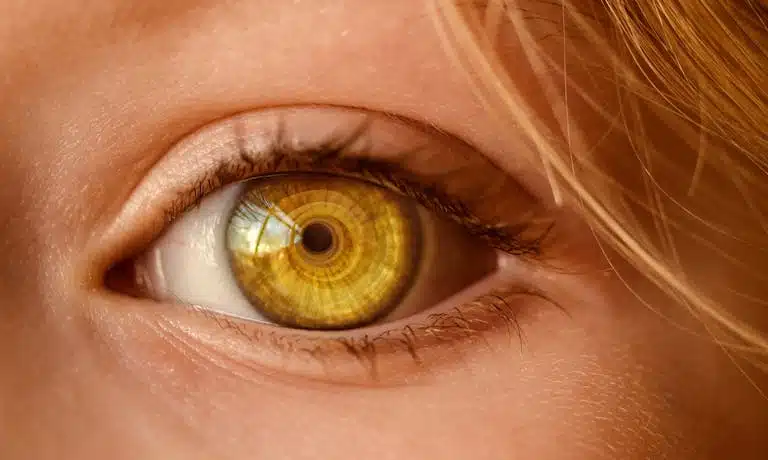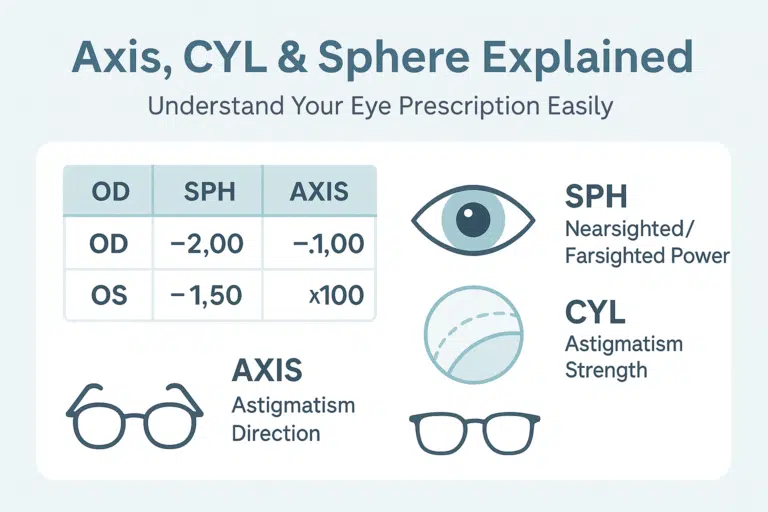Canthal Tilt Explained: Boost Your Youthful Appearance
Canthal tilt means the angle between the line drawn straight in between the inner corner of your eye (medial canthus) and the outer with (lateral canthus). This feature is rather simple but quite potent, as seen in recent years, when the debate about face aesthetics is flourishing on social media. The effect of a canthal tilt can be enormously successful when it comes to the perception in youthfulness and beauty and emotional endearingness of the face.
In this blog, you will all come to know about Canthal Tilt, its Type, how to fix Canthal Tilt, and the surgery of Canthal Tilt.
What Is Canthal Tilt?
Canthal tilt is the angle at which a hypothetical line is imagined moving between the medial canthus (inner corner of the eye) and the lateral canthus (outer corner of the eye). This kind of slope defines how your eyes will be with either lifted, straight, or slanted.
- In case it is raised, then it is referred to as the positive canthal tilt.
- When it lies at a level position, it is neutral canthal tilt.
- When it is lower, then we are talking about a negative canthal tilt.
Although it is a small angle, it is the thing that has a huge say on how young, bright, or exhausted your eyes and face are.

Types of Canthal Tilt
Positive Canthal Tilt
This tilt would be deemed the best or aesthetically pleasing tilt. The outer canthus is a bit above the inner canthus, a range of 2-4 degrees in this instance. It provides:
- Raised and young appearance.
- A brighter, awake, and enlivened face..
- More symmetrically shaped eyes are the majority.
Most of the fashion models, celebrities, and other personalities who are in the limelight are reported to have this inclination, making them more attractive..

Neutral Canthal Tilt
A neutral tilt is when the inner and outer curbs of your eye are horizontally resting. It does not speak of anything on an extreme note, but it does not give the energy boost that the positive inclination would give. It may appear:
- Balanced but slightly dull.
- Neither youthful nor tired.
- Neutral in emotional expression.
It is inherent in some people, and this is not a problem to be attractive; simply, it cannot cause many people to be more attractive.
Negative Canthal Tilt
It is where the outside of the canthus occurs beneath the inside canthus. It is frequently considered aesthetically undesirable and may be connected with:
- Exhausted, old, or depressed look.
- Saggy eyes that portray you as less conscious.
- An inharmonious or mixed-up facial appearance.

In case you are reading this and you have found out that you have a negative tilt in your eyes-do not panic. It can be approached both naturally and medically.
Positive vs. Negative Canthal Tilt
Key Differences
| Feature | Positive Tilt | Negative Tilt |
|---|---|---|
| Eye Expression | Alert, youthful | Tired, sad |
| Aesthetic Appeal | More desirable | Less desirable |
| Facial Symmetry | Enhanced | Diminished |
| Common in | Models, actors | Age-related or genetic |
Psychological Impact
The negative canthal tilt may affect how you are perceived by other people. Subconsciously, your face can be perceived by other people as less energetic or even depressed. However, the good news is–there are many ways that you can make a difference to your tilt–both non-surgical and surgical.
How to Fix Positive Canthal Tilt
Do You Even Need to Fix It?
Usually, an upward canthal tilt does not require correction. But when it is exaggerated, it may turn out to look like a cat-eye look, which may not flatter everyone. In exceptional circumstances only, you can consider cosmetic correction; otherwise,e positive tilt is desirable.l.
Maintaining a Balanced Positive Tilt
These are some of the helpful practices to have a positive canthal tilt:
1. Eye Care
- Avoid strain and dryness.
- Do not forget to use light properly when reading or doing some work.
2. Skin Care Around the Eyes
- Protect skin by moisturising and using sunscreen.
- Products containing retinol or peptides help to make the skin more elastic.
3. Lifestyle Habits
- Get enough sleep.
- Eat a balanced diet.
- Reduce alcohol and smoking—these age your skin faster.
How to Fix Negative Canthal Tilt
1. Facial Exercises
Some eye muscles, like the orbicularis oculi muscles, are exercised by use of eye-tightening and facial lifting exercises. Among the most popular ones, we may mention:
- Eye squeeze holds (gently squint and hold for 10 seconds).
- Brow lifts (raise your brows while keeping your eyes wide open).
These exercises might offer minor improvements over time.
2. Posture and Head Position
Surprisingly, the angle of your head may have a minimal influence on the perception of your eyes. Forward head posture has the effect of giving the eyes a downturned appearance. With a reduction in head and neck imbalance, a slight distortion in vision can occur.
3. Skin Tightening Treatments
Non-surgical treatments like:
- Radiofrequency therapy
- Ultrasound skin tightening
- Microneedling with PRP
These will cause the skin around your eyes to become tighter, such that the outer canthus is elevated with subtlety.
4. Botox or Fillers
Filler drugs may be used to fill in the hollows that may have developed with age, and Botox can serve to elevate the outer corners of the eyes to neutralize the negative tilt. It is something you will require a qualified cosmetic dermatologist to do.
Read Also: Hunter or Prey? Decipher Your Gaze

Surgical Options for Canthal Tilt Correction
You may want to turn to surgery when natural techniques fail to show any serious results. A negative canthal tilt can be corrected by a well-known surgery.
1. Canthoplasty
It puts the lateral canthus at a different position by tightening, elevating the outer corner of the eye. It is commonly applied to:
- Correct drooping or sagging lower eyelids.
- Create a more almond-shaped eye.
- Improve a negative slant into a neutral or a positive one.
Canthoplasty is widely used by patients who want to find a more durable solution.
2. Canthopexy
Compared with canthoplasty, canthopexy is less invasive, as it uses the existing canthal tendon and reinforces it. It is normally applied when we have the structure still standing, yet there is a need to add support.
- Lifts and secures the outer eye corner.
- Provides a subtle improvement.
- Has a shorter recovery time.
3. Lateral Tarsal Strip Surgery
This technique has been applied mainly to address lower eyelid malposition, although it can also treat extreme negative tilts. It is the process of stripping off a share of the lower eyelid and reconnecting it to a more superior location at the lateral orbital margin.
Choosing the Right Option
Factors to Consider
Prior to running into a surgical solution, you need to take into account:
- Age: In case you are younger, then non-surgical ways may be effective.
- Skin condition: Elastic skin is sensitive to natural procedures.
- Budget: Surgical operations may be costly.
- Goals: Do you want subtle improvement or dramatic change?
This is one of the decisions I would always advise consultation with a board-certified plastic surgeon or an oculoplastic specialist before such a decision is reached.
FAQS
How can I tell what type of canthal tilt I have?
Look in a mirror and imagine a line between the inner and outer corners of your eye:
- If the outer corner is higher, you have a positive tilt.
- If it’s level, it’s a neutral tilt.
- If the outer corner is lower, you have a negative tilt.
Is it possible to improve my canthal tilt without surgery?
Yes. The commonest processes are:
- Botox to perfect the tail of the brow
- Dermal fillers to fill the areas adjacent to it
- To draw the illusion of a positive tilt, makeup techniques are used
Although they are temporary, non-invasive options can provide improvements that will be noticeable.
What surgical procedures can correct canthal tilt?
The most common procedures include:
- Canthopexy: A less disfiguring procedure, the process of tightening up the canthal tendon.
- Canthoplasty: A more intensive method that reconstructs the tendon for dramatic change.
Are canthopexy and canthoplasty the same?
No. Canthopexy just tightens and anchors the natural tendon without tearing it, whereas canthoplasty cuts the tendon and gives it a new position to produce a more striking alteration in the appearance of the eyes.
Can makeup create a positive canthal tilt illusion?
Absolutely. By using:
- Winged eyeliner
- Dark-to-light gradient eyeshadow
- Highlighter on the brow bone
You can simulate the lifted, almond-eye appearance of a positive tilt.
How long does recovery take after canthal tilt surgery?
- Canthopexy: Recovery usually takes 1–2 weeks, with minimal swelling or bruising.
- Canthoplasty: Recovery may take 2–4 weeks, depending on complexity and individual healing response.
Always follow your surgeon’s post-operative care instructions.
Does canthal tilt correction hurt?
The majority of operations are performed with the help of local or general anesthesia. After the surgery, the patient experiences mild pain, bruises, and swelling, but thankfully, the level of pain is often tolerable with the drugs that are prescribed to the patient.
Is there a risk or complications of the canthal tilt procedure?
Like all surgical procedures, there are risks, including:
- Infection
- Scarring
- Asymmetry
- Eyelid malposition
Choosing an experienced surgeon significantly reduces these risks.
Read Also: Transform Your Face with Tongue Chewing
Final Words
Having a positive, neutral, or negative tilt could be a major factor modifying the appearance of your eyes and, hence, your face. Although there are non-surgical solutions such as the use of makeup, Botox, and fillers as a temporary measure, surgical remedies like canthopexy and canthoplasty have more lasting effects.
Just as with any other aesthetic choice, you need to talk to a competent surgeon and arrive at the best solution depending on your intentions and anatomy.







